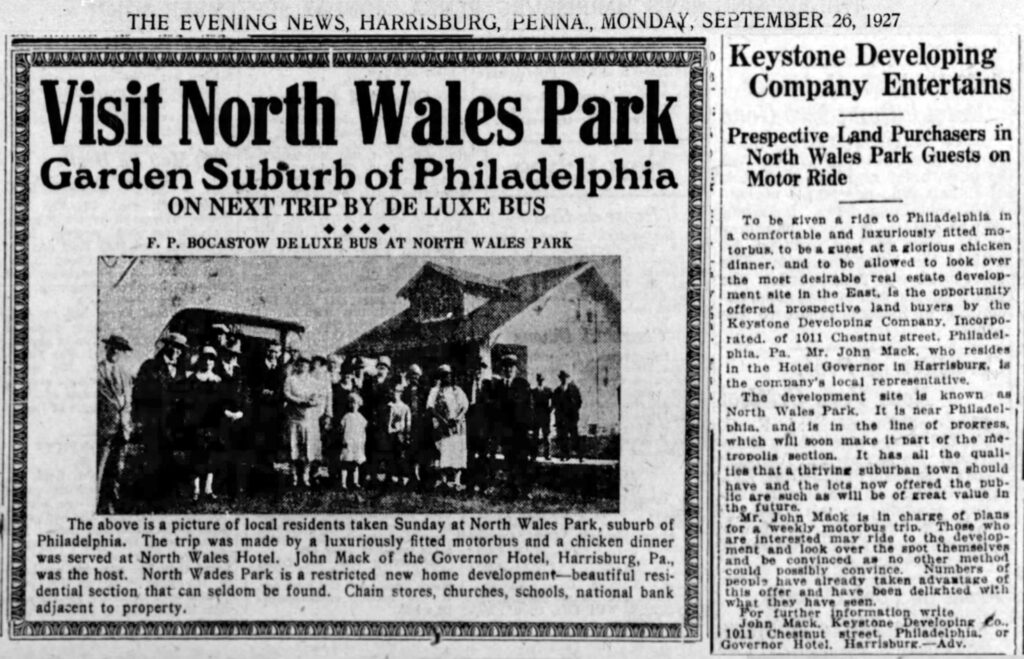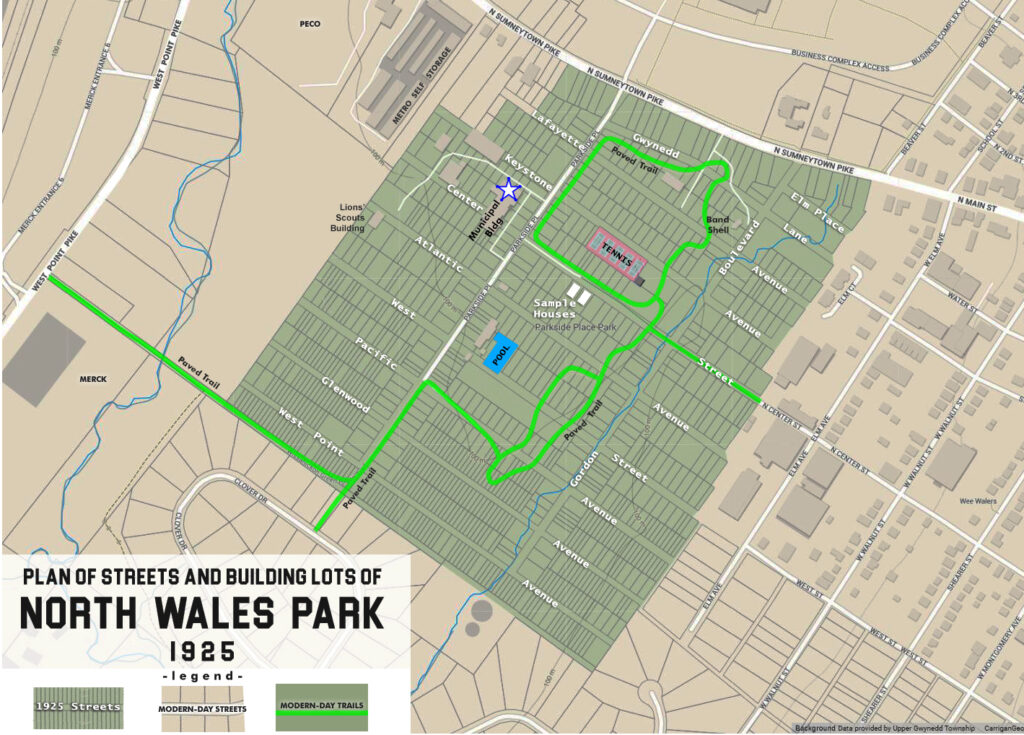In 1925 Keystone Developing Company purchased and subdivided the 100-acre Gordon tract in Upper Gwynedd Township. The half-mile long southeast boundary line of the property butted up against the borough of North Wales. Keystone Developing Company wasted no time in carving the property into a grid of paper streets and hundreds of building lots to sell to prospective homeowners and investors. The nearby attractions of the neighboring borough, and the opportunity to commute by way of the electric trolley cars on Sumneytown Pike, were selling features.
On Sundays in 1926, 1927 and 1928 promoters bussed upstate people to a new development they called North Wales Park, with the promise of a sightseeing outing and complementary chicken dinner. Only two houses were built, on the southwest side of Center Street. One is pictured below. A water main was extended beneath Center Street from North Wales to serve the development. Neither house survives today.

At first, the developers offered reasonably sized building lots, but subsequent phases sliced blocks into narrow lots that were too small to construct a suburban house. Deeds to some lots were given away as “prizes.” Old-timers remember these being referred to as carnival lots or movie lots, because those were among the venues where titles to those properties could be “won.” In subsequent years many lots were subject to sheriff’s sale for nonpayment of property tax (amounts owed seldom exceeded $5). Deeds were forgotten in desk drawers; owners moved away or died. The addresses of myriad vacant properties refer to planned streets that were never built: Gordon Boulevard, Atlantic Avenue, Lafayette Avenue, and others.
Gordon Boulevard’s alignment can be hiked today, an earthen footpath alongside a single line of utility poles cutting a clear swath through the woods. Portions of Center Street and Parkside Place are today occupied by 10 foot wide paved trails.
By 1970, Upper Gwynedd Township had begun the painstaking process of tracking down and gaining possession of the patchwork of parcels, naming the new municipal complex Parkside Place — one of the original 1920s street names.

The tradition of carnival and fireworks at Parkside Place goes back a lot farther than we may realize, back to the days when the developer had not yet given up on selling building lots. The July 10, 1930 issue of the Ambler Gazette reported that Independence Day fireworks were set off “promptly at 10 o’clock near the grove on the former Gordon farm and were very much admired by the big crowd from North Wales and nearby towns.” The article went on to say that no accidents of much account were reported, only “a small bomb in exploding broke the lens of a local resident’s eyeglasses, slightly injuring an eye.”
